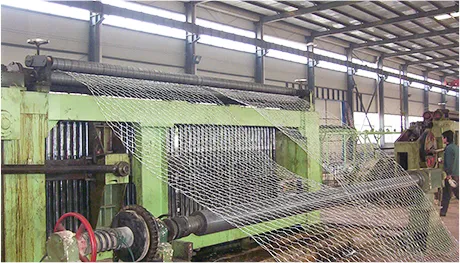-
 Phone:
Phone: -
 Email:
Email:

Rockfall Protection Solutions with Innovative Netting Systems for Enhanced Safety
Rockfall Netting A Vital Solution for Slope Stability
Rockfall netting is an essential method employed in geotechnical engineering to mitigate the risks associated with rockfalls in mountainous regions and steep terrains. The growing incidence of natural hazards driven by climate change, coupled with increased human activity in vulnerable areas, has prompted an urgent need for effective rockfall prevention measures. Rockfall netting provides a proactive solution, protecting infrastructure and ensuring the safety of people in affected regions.
Understanding Rockfall Hazards
Rockfalls occur when a mass of rock or debris becomes detached from a rock face due to natural weathering processes, seismic activity, or anthropogenic disturbances. Factors like freeze-thaw cycles, erosion, and vegetation loss can destabilize rocks, making them prone to falling. The consequences of rockfalls can be catastrophic they can block roads, damage buildings, and even lead to fatalities. Therefore, identifying locations with potential rockfall hazards is crucial for risk management and infrastructure planning.
The Role of Rockfall Netting
Rockfall netting involves the installation of protective netting systems on slopes to catch and redirect falling rocks. This method is often used in combination with other stabilization techniques, such as rock bolts and shotcrete, to enhance slope resilience. The netting is typically made from high-strength materials such as steel or polymer fibers, designed to withstand significant force and impact from falling debris.
One of the primary advantages of rockfall netting is its versatility. It can be adapted to various terrains and environmental conditions, making it an effective solution for both urban and rural landscapes. The netting systems can be installed on steep slopes, cliff faces, and even in areas where traditional stabilization methods are impractical due to limited space or environmental concerns.
Applications and Benefits
rockfall netting

The application of rockfall netting is widespread in various sectors, including transportation, mining, and tourism. On highways and railways, rockfall netting plays a critical role in keeping transportation routes safe and operational, reducing the likelihood of rock-related accidents. In the mining industry, it helps secure excavations and minimize hazards to workers. Additionally, it is used in recreational areas to protect trails and ensure the safety of hikers and tourists.
Beyond immediate safety benefits, rockfall netting also contributes to long-term economic savings. By preventing rockfalls, communities can avoid costly road closures, emergency response efforts, and infrastructure repairs. Moreover, the installation of rockfall netting can enhance property values by mitigating risks and improving perceptions of safety in the area.
Installation Considerations
Success in implementing rockfall netting systems depends on thorough site assessments and rigorous engineering considerations. Factors such as slope angle, rock type, and potential weather impacts must be taken into account. Engineers often conduct geotechnical investigations to analyze the site conditions, ensuring that the chosen netting system is both effective and sustainable.
The installation process involves anchoring the netting securely to the slope, often employing various techniques to maximize its effectiveness. It's essential to regularly monitor and maintain the netting, as environmental conditions can affect its integrity over time.
Conclusion
Rockfall netting represents a proactive and effective approach to managing rockfall hazards in various environments. By enhancing slope stability and ensuring the safety of people and infrastructure, rockfall netting stands as a testament to modern engineering solutions tailored to address natural risks. As climate change continues to impact geological stability worldwide, the implementation and advancement of such protective measures will be crucial in safeguarding both communities and natural landscapes. Whether through enhanced design techniques or innovative materials, the future of rockfall mitigation looks promising, paving the way for safer living and working environments in vulnerable areas.
-
Wire Mesh for Every Need: A Practical SolutionNewsJul.25,2025
-
Steel Fences: Durable, Secure, and Stylish OptionsNewsJul.25,2025
-
Roll Top Fencing: A Smart Solution for Safety and SecurityNewsJul.25,2025
-
Cattle Farm Fencing Solutions for Maximum SecurityNewsJul.25,2025
-
Affordable Iron Binding Wire SolutionsNewsJul.25,2025
-
Affordable Galvanized Wire SolutionsNewsJul.25,2025
-
Wire Hanger Recycling IdeasNewsJul.25,2025








